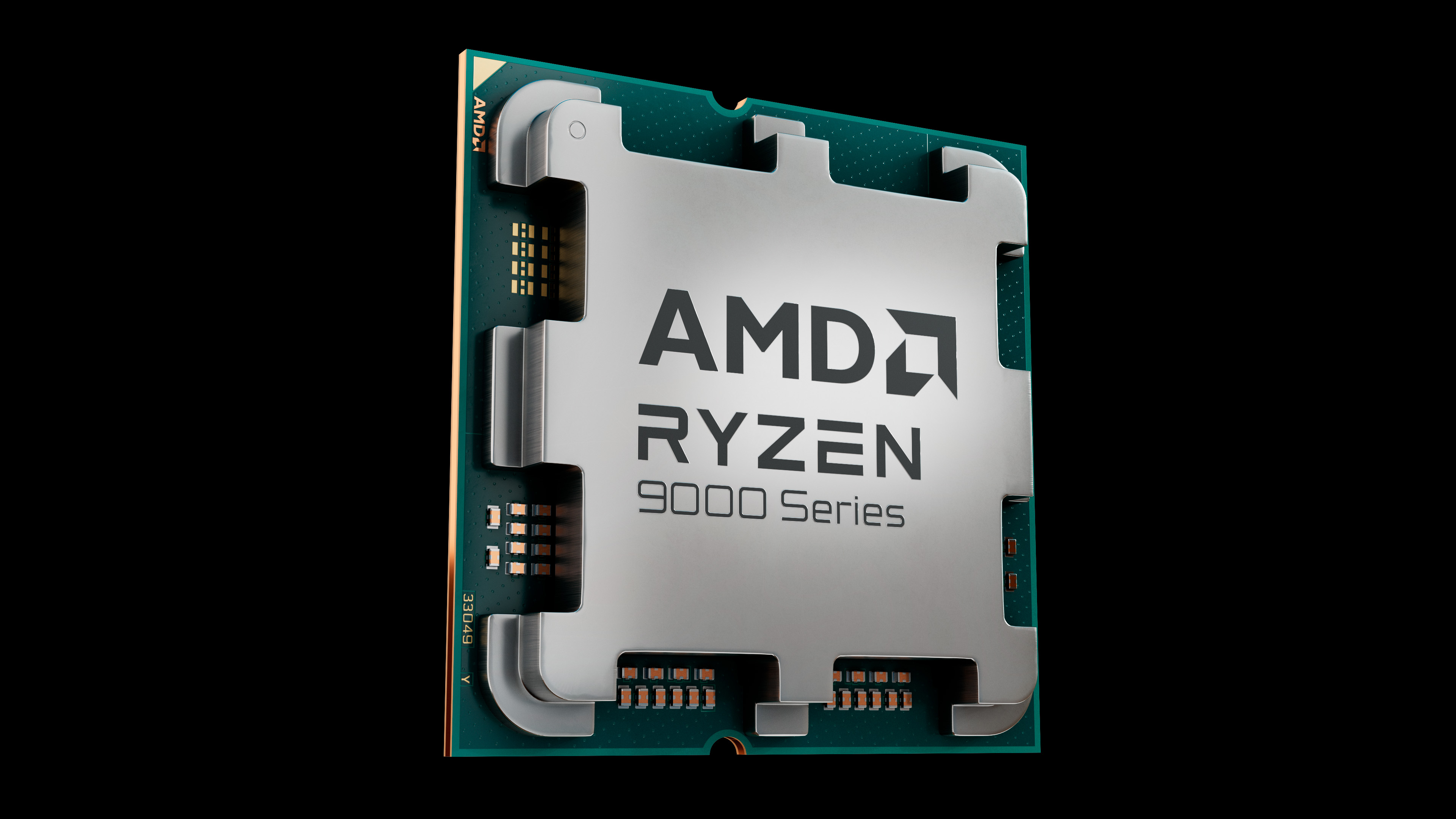AMD Ryzen 9000 iGPU-less CPUs listed for under $300 — unreleased Pro chips start at $350

Thanks to hardware leaker momomo_us, we've discovered U.S. retailer listings for several unreleased AMD Ryzen Zen 5 processors. The Ryzen 7 9700F and Ryzen 5 9500F, which lack integrated graphics, are targeted at consumers, whereas the Ryzen 9 Pro 9945, Ryzen 7 Pro 9745, and Ryzen 5 Pro 9645 are designed for businesses.
Bottom Line Telecommunications, Inc. (BTL) listed the Ryzen 7 9700F at a price of $294.14, approximately $35 less than the current market price of the Ryzen 7 9700X. Both processors possess an eight-core, 16-thread configuration; however, the Ryzen 7 9700X provides higher clock speeds and integrated graphics.
Conversely, the U.S. retailer offers the Ryzen 5 9500F at a price of $217.84. However, this may be a provisional listing, given that the Ryzen 5 9600X is currently available at a starting price of $197. For reference, AMD has introduced the Ryzen 5 7500F at a retail price of $179; therefore, a price below $200 for the Ryzen 5 9500F would appear to be more plausible.
Processor | BLT Pricing | Cores / Threads | TDP (W) | OPN |
|---|---|---|---|---|
Ryzen 9 Pro 9945 | $551.89 | 12 / 24 | 65 | 100-000001407 |
Ryzen 7 Pro 9745 | $453.05 | 8 / 16 | 65 | 100-000001408 |
Ryzen 5 Pro 9645 | $348.74 | 6 / 12 | 65 | 100-000001409 |
Ryzen 7 9700F | $294.14 | 8 / 16 | 65 | 100-000001902 |
Ryzen 5 9500F | $217.84 | 6 / 12 | 65 | 100-000001406 |
As previously indicated by momomo_us several months ago, AMD is preparing to introduce the company's Ryzen Pro 9000 processors, thereby completing its Zen 5 product line-up. Although potential specifications have already been discussed, the pricing details were not available until now.
Assuming that BTL's pricing information is accurate, the Ryzen 9 Pro 9945 may incur a cost of up to $551.89 for professional users or enterprises. This price exceeds that of the flagship 16-core Ryzen 9 9950X, which is currently available in the retail market for $519.99.
Meanwhile, the Ryzen 7 Pro 9745 and Ryzen 5 Pro 9645 could retail at $453.05 and $348.74, respectively. These prices are logically higher than those of their mainstream counterparts. It is essential to note that the Pro variants generally share similar specifications with the consumer versions but offer additional professional features, along with extended availability and a longer lifespan.
The most recent retailer listings suggest that AMD is poised to officially unveil these new Ryzen processors in the near future. As a general rule, it is advisable to approach all information, especially benchmarks, if any emerge in the upcoming days, with caution until an official announcement is made.
Get Tom's Hardware's best news and in-depth reviews, straight to your inbox.
Follow Tom's Hardware on Google News, or add us as a preferred source, to get our up-to-date news, analysis, and reviews in your feeds. Make sure to click the Follow button!

Zhiye Liu is a news editor, memory reviewer, and SSD tester at Tom’s Hardware. Although he loves everything that’s hardware, he has a soft spot for CPUs, GPUs, and RAM.
-
abufrejoval It's very hard to imagine these as a result of binning bad chips, unlike some of their APU cousins.Reply
But then having an iGPU when you're using a dGPU, on non-laptops often enough just adds trouble and drivers, even if I've occasionally used the iGPU as a hypervisor console when the dGPU was given to a VM via pass-through.
Just being able to deactivate the iGPU in the BIOS thus never had me lust for a iGPU-less variant of a chip, that clearly included the transistors, even if dead or fused off: I have an instinctive aversion to culled hardware and rather pay an extra few € on fully functional hardware.
So I find it hard to guess if this is really customer demand or recycling the last bits of half-way usable silicon.
Using the area that Intel's desktop CPUs used for their iGPU to provide extra 4 cores instead was the genius move that pulled AMD back from oblivion and the Zen4/5 IOD iGPUs offered a rather good minimal functionality without wasting too much real-estate: at zero extra cost, they seem a much better deal than any NPU: I'm actually missing the BIOS deactivation feature there and would probably pay a little extra to have it fused off: too many vendors tempted to use it against you... -
usertests Reply
It's a tiny iGPU, and competitive with the Raptor Lake desktop iGPU. Half as fast Arrow Lake though.abufrejoval said:So I find it hard to guess if this is really customer demand or recycling the last bits of half-way usable silicon.
Using the area that Intel's desktop CPUs used for their iGPU to provide extra 4 cores instead was the genius move that pulled AMD back from oblivion and the Zen4/5 IOD iGPUs offered a rather good minimal functionality without wasting too much real-estate
Being only one workgroup (2 CUs), I think if something goes wrong, the whole thing needs to be disabled. AMD no longer has the ability to have an odd number of CUs as far as I know.
If AMD makes the desktop iGPU larger in the future (e.g. 2-4 WGPs, 4-8 CUs), maybe "F" SKUs can go away.
Bad thinking. The NPU is not evil, spying operating systems are. You must be using the wrong OS.abufrejoval said:they seem a much better deal than any NPU: I'm actually missing the BIOS deactivation feature there and would probably pay a little extra to have it fused off: too many vendors tempted to use it against you...
The iGPU can do some of the same operations anyway. -
abufrejoval Reply
To my knowledge the NPU is userland accessible. I'm not even sure their use requires privileges. Can't really tell because there isn't even much of any tooling to have a peek. Pretty sure it Turing complete...usertests said:Bad thinking. The NPU is not evil, spying operating systems are. You must be using the wrong OS.
In any case, the ability to turn it off at the BIOS level is as critical as for any of those other generational 'improvements', which offer potential for abuse: many consumers were exposed to virtual machines only via game vendors using it to implement copy protection schemes (which is why it VM support could be turned off) and now it's making a return via anty-cheat.
I'm just waiting for the first trojans using the NPU to wreak havoc just like service processors inside TPUs are being used to implement firmware malware that's impossible to eradicate once it's settled in. -
abufrejoval Reply
Just to highlight this point:abufrejoval said:I'm just waiting for the first trojans using the NPU to wreak havoc just like service processors inside TPUs are being used to implement firmware malware that's impossible to eradicate once it's settled in.
A former collague of mine fourty years ago told me on how he had managed to overcome the security of an IBM mainframe running VM/370 (his tales got me started on this whole virtualization business...)
That OS kept user passwords in clear text, but under discretionary access control, so the equivalent of /etc/passwd couldn't be read or written by mere mortals.
The 370 hardware supported channel processors, essentially truly programmable DMA, to accelerate I/O, becuse mainframes hate to wait (reminds me of CDC 6000 hardware ISAM).
And it supported full hardware virtualization, ...including a virtual channel processor.
And while the hypervisor ensured that any attempt of the guest OS to access "/etc/passwd" via CPU code was caught and trapped, it didn't sufficiently check the channel programs that ran on the virtualized I/O processor...
So he wrote a channel processor program to find and modify that "/etc/passwd" file from inside a virtual machine, which he was allowed to create and operate and which would bypass whatever security layers the hypervisor implemented.
He called it "MAKEA" because it gave him class A privileges, which evidently gives you full control over the physical host.
That was my first exposure to side channel attacks: the thing every hardware designer thinks of last and with the least amount of enthusiasm.